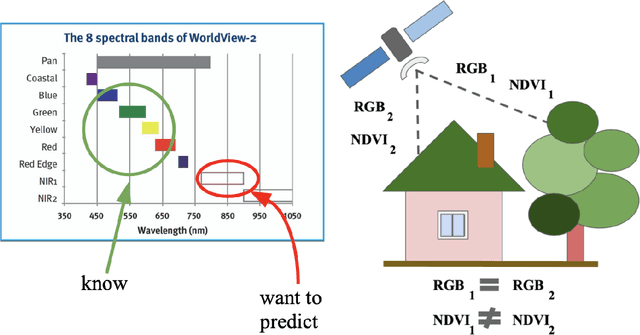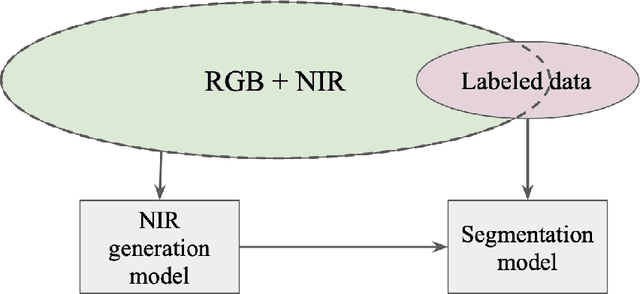Generation of the NIR spectral Band for Satellite Images with Convolutional Neural Networks
Paper and Code
Jun 13, 2021



The near-infrared (NIR) spectral range (from 780 to 2500 nm) of the multispectral remote sensing imagery provides vital information for the landcover classification, especially concerning the vegetation assessment. Despite the usefulness of NIR, common RGB is not always accompanied by it. Modern achievements in image processing via deep neural networks allow generating artificial spectral information, such as for the image colorization problem. In this research, we aim to investigate whether this approach can produce not only visually similar images but also an artificial spectral band that can improve the performance of computer vision algorithms for solving remote sensing tasks. We study the generative adversarial network (GAN) approach in the task of the NIR band generation using just RGB channels of high-resolution satellite imagery. We evaluate the impact of a generated channel on the model performance for solving the forest segmentation task. Our results show an increase in model accuracy when using generated NIR comparing to the baseline model that uses only RGB (0.947 and 0.914 F1-score accordingly). Conducted study shows the advantages of generating the extra band and its implementation in applied challenges reducing the required amount of labeled data.
 Add to Chrome
Add to Chrome Add to Firefox
Add to Firefox Add to Edge
Add to Edge